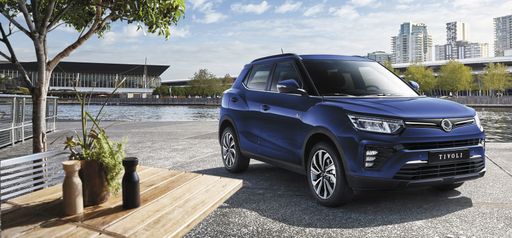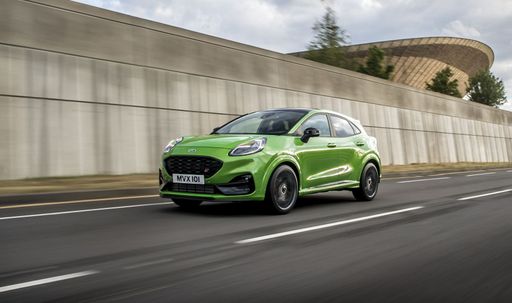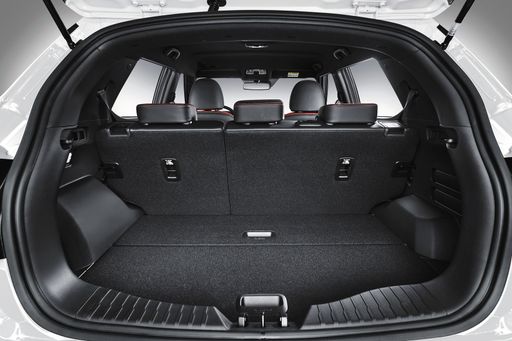Ford Puma vs SsangYong Tivoli – Which car suits you better?
Both models have their strengths – but which one suits you more?
Compare performance, efficiency, price and space directly: Ford Puma or SsangYong Tivoli?
Costs and Efficiency:
Price and efficiency are key factors when choosing a car – and this is often where the real differences emerge.
SsangYong Tivoli has a to a small extent advantage in terms of price – it starts at 21400 £, while the Ford Puma costs 24800 £. That’s a price difference of around 3351 £.
Fuel consumption also shows a difference: Ford Puma manages with 5.40 L and is therefore noticeable more efficient than the SsangYong Tivoli with 7 L. The difference is about 1.60 L per 100 km.
Engine and Performance:
Power, torque and acceleration say a lot about how a car feels on the road. This is where you see which model delivers more driving dynamics.
When it comes to engine power, the Ford Puma has a slight edge – offering 168 HP compared to 163 HP. That’s roughly 5 HP more horsepower.
In terms of top speed, the Ford Puma performs to a small extent better – reaching 210 km/h, while the SsangYong Tivoli tops out at 181 km/h. The difference is around 29 km/h.
There’s also a difference in torque: Ford Puma pulls slight stronger with 290 Nm compared to 280 Nm. That’s about 10 Nm difference.
Space and Everyday Use:
Cabin size, boot volume and payload all play a role in everyday practicality. Here, comfort and flexibility make the difference.
Both vehicles offer seating for 5 people.
In curb weight, Ford Puma is slight lighter – 1316 kg compared to 1375 kg. The difference is around 59 kg.
In terms of boot space, the SsangYong Tivoli offers noticeable more room – 720 L compared to 523 L. That’s a difference of about 197 L.
In maximum load capacity, the SsangYong Tivoli performs to a small extent better – up to 1440 L, which is about 157 L more than the Ford Puma.
When it comes to payload, Ford Puma slight takes the win – 469 kg compared to 455 kg. That’s a difference of about 14 kg.
Who comes out on top?
Overall, the SsangYong Tivoli shows itself to be is largely superior and secures the title of DriveDuel Champion.
It convinces with the more balanced overall package and proves to be the more versatile choice for everyday use.
 @ SsangYong Motor / KG Mobility
@ SsangYong Motor / KG Mobility
SsangYong Tivoli
Ford Puma
The Ford Puma is a cheeky compact crossover that blends sporty styling with city-friendly practicality, giving drivers a surprisingly fun and composed ride. With clever storage tricks and a lively personality, it’s a smart pick for buyers who want enjoyment without fuss.
details @ Ford Motor Company / Ford Media Center
@ Ford Motor Company / Ford Media Center
 @ Ford Motor Company / Ford Media Center
@ Ford Motor Company / Ford Media Center
 @ Ford Motor Company / Ford Media Center
@ Ford Motor Company / Ford Media Center
 @ Ford Motor Company / Ford Media Center
@ Ford Motor Company / Ford Media Center
SsangYong Tivoli
The SsangYong Tivoli is a compact SUV that seamlessly blends style with practicality, making it an appealing choice for urban drivers. Its sleek design is complemented by a well-crafted interior, offering a comfortable and spacious experience for passengers. With its reliable performance and modern features, the Tivoli stands out as a versatile option in the competitive compact SUV market.
details @ SsangYong Motor / KG Mobility
@ SsangYong Motor / KG Mobility
 @ SsangYong Motor / KG Mobility
@ SsangYong Motor / KG Mobility
 @ SsangYong Motor / KG Mobility
@ SsangYong Motor / KG Mobility
 @ Ford Motor Company / Ford Media Center
@ Ford Motor Company / Ford Media Center
|
 @ SsangYong Motor / KG Mobility
@ SsangYong Motor / KG Mobility
|
|
|
|
Costs and Consumption |
|
|---|---|
|
Price
24800 - 36300 £
|
Price
21400 - 30300 £
|
|
Consumption L/100km
5.4 - 5.9 L
|
Consumption L/100km
7 - 8.3 L
|
|
Consumption kWh/100km
13.1 - 13.9 kWh
|
Consumption kWh/100km
-
|
|
Electric Range
361 - 376 km
|
Electric Range
-
|
|
Battery Capacity
43 kWh
|
Battery Capacity
-
|
|
co2
0 - 135 g/km
|
co2
161 - 191 g/km
|
|
Fuel tank capacity
42 L
|
Fuel tank capacity
50 L
|
Dimensions and Body |
|
|---|---|
|
Body Type
SUV
|
Body Type
SUV
|
|
Seats
5
|
Seats
5
|
|
Doors
5
|
Doors
5
|
|
Curb weight
1316 - 1563 kg
|
Curb weight
1375 - 1492 kg
|
|
Trunk capacity
456 - 523 L
|
Trunk capacity
395 - 720 L
|
|
Length
4186 - 4226 mm
|
Length
4225 - 4480 mm
|
|
Width
1805 mm
|
Width
1810 mm
|
|
Height
1550 - 1555 mm
|
Height
1613 - 1646 mm
|
|
Max trunk capacity
1216 - 1283 L
|
Max trunk capacity
1115 - 1440 L
|
|
Payload
367 - 469 kg
|
Payload
425 - 455 kg
|
Engine and Performance |
|
|---|---|
|
Engine Type
Electric, Petrol MHEV
|
Engine Type
Petrol
|
|
Transmission
Automatic, Manuel
|
Transmission
Manuel, Automatic
|
|
Transmission Detail
Reduction Gearbox, Manual Gearbox, Dual-Clutch Automatic
|
Transmission Detail
Manual Gearbox, Automatic Gearbox
|
|
Drive Type
Front-Wheel Drive
|
Drive Type
Front-Wheel Drive, All-Wheel Drive
|
|
Power HP
125 - 168 HP
|
Power HP
163 HP
|
|
Acceleration 0-100km/h
7.4 - 9.8 s
|
Acceleration 0-100km/h
-
|
|
Max Speed
160 - 210 km/h
|
Max Speed
175 - 181 km/h
|
|
Torque
170 - 290 Nm
|
Torque
260 - 280 Nm
|
|
Number of Cylinders
3
|
Number of Cylinders
4
|
|
Power kW
92 - 124 kW
|
Power kW
120 kW
|
|
Engine capacity
999 cm3
|
Engine capacity
1497 cm3
|
General |
|
|---|---|
|
Model Year
2025
|
Model Year
2021 - 2024
|
|
CO2 Efficiency Class
A, D
|
CO2 Efficiency Class
F, G
|
|
Brand
Ford
|
Brand
SsangYong
|
Is the Ford Puma offered with different drivetrains?
The Ford Puma is offered with Front-Wheel Drive.
The prices and data displayed are estimates based on German list prices and may vary by country. This information is not legally binding.
